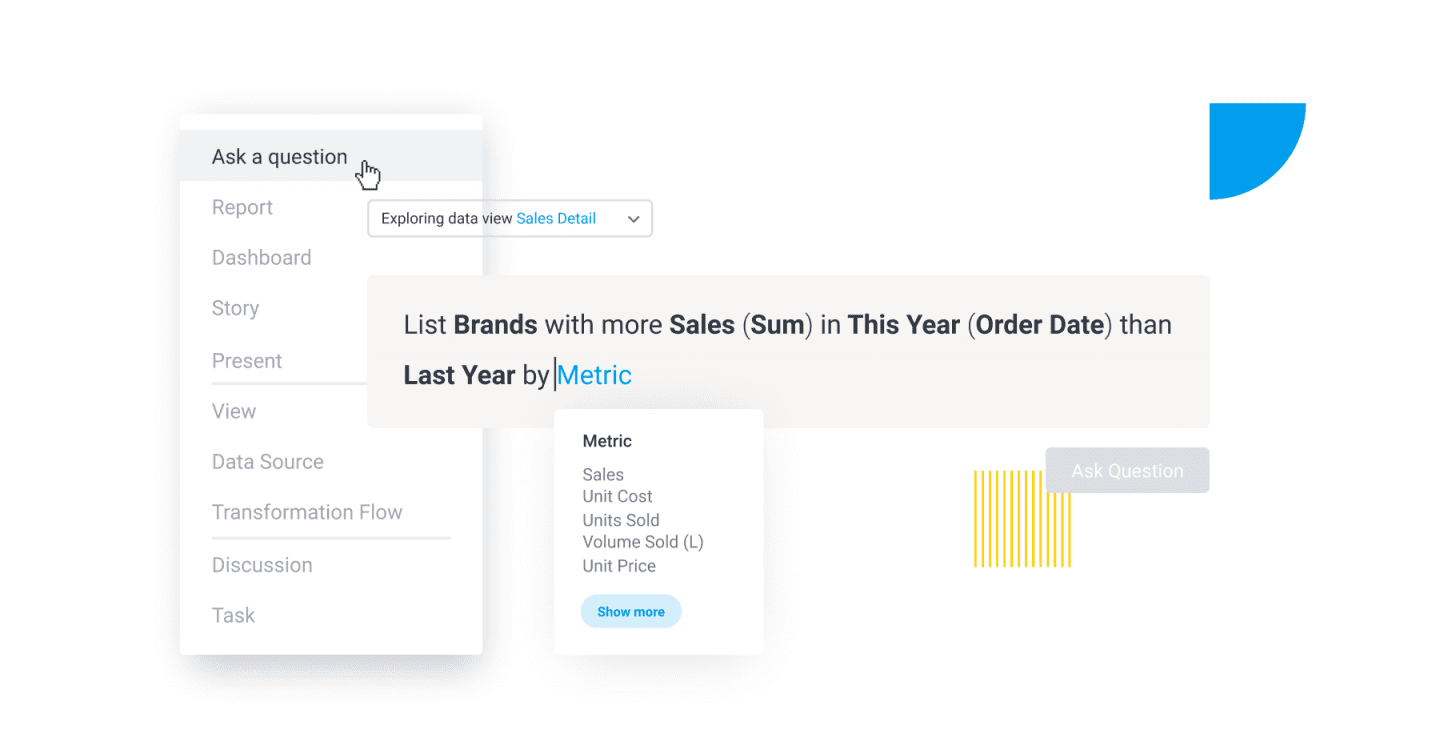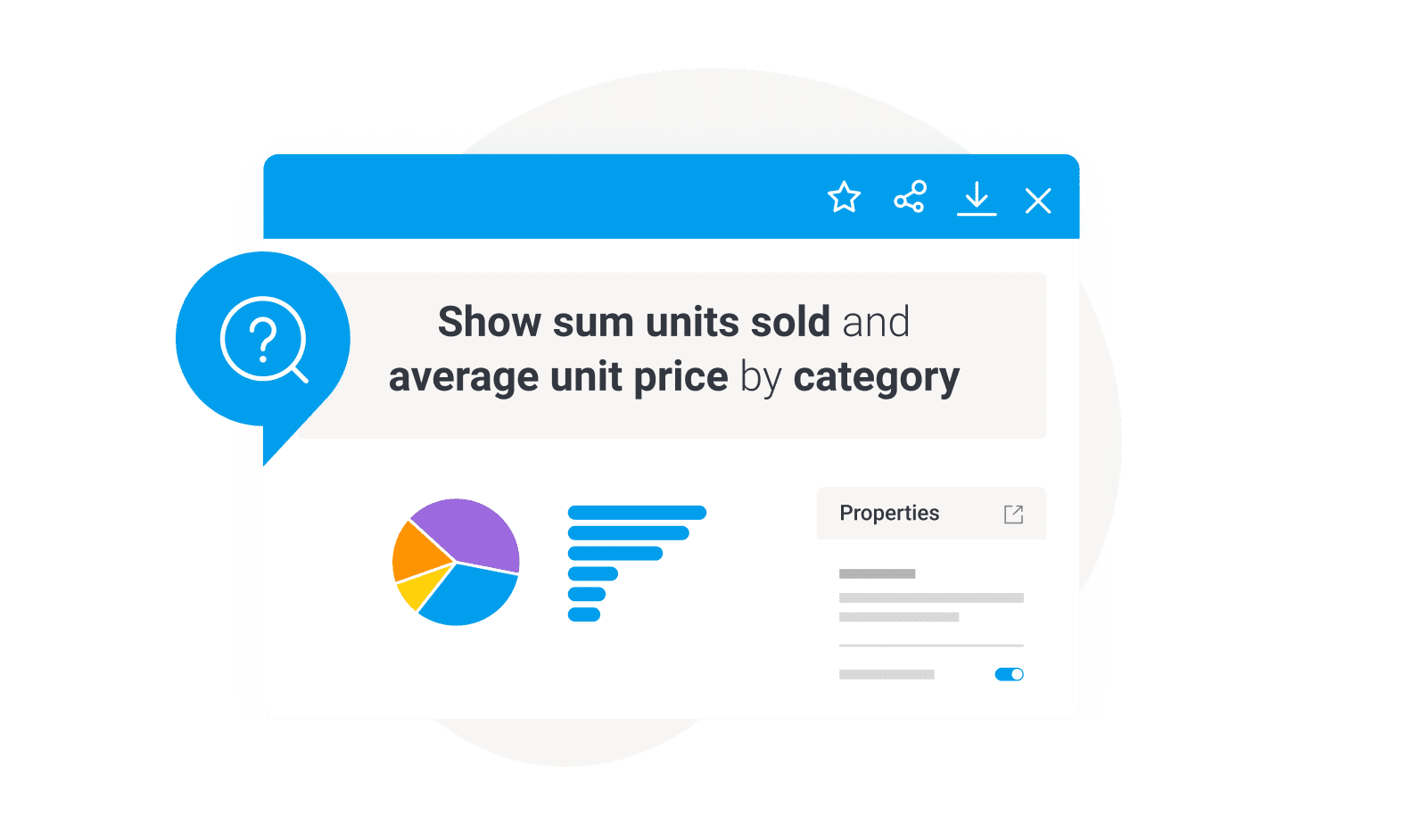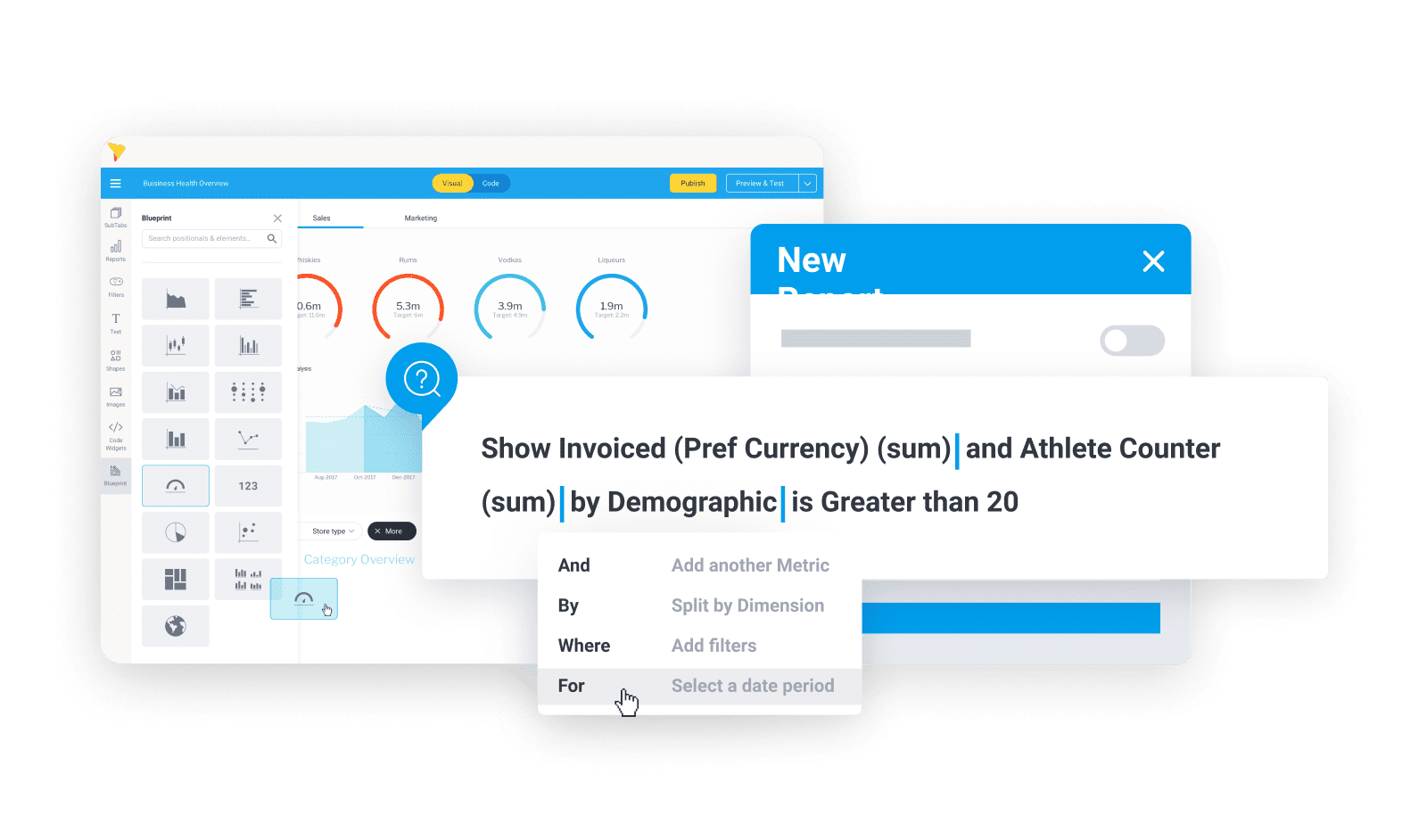
An introduction to Yellowfin Guided NLQ: What is it?
It’s long been said the secret to a better answer is to ask a better question. But in the era of self-service analytics and natural language query (NLQ), it’s easier said than done.
Today, organizations adopting business intelligence (BI) solutions have increasingly recognized there’s a lot of opportunity to make better use of their business information. With the right tools, there is much value that can be extracted by querying your data.
However, being able to ask a nuanced question of billions of pieces of collected information in your business systems, and obtain actionable, meaningful insights is an ongoing challenge for many analytics users - especially those who aren't data experts.
To address this, many vendors offer natural language query (NLQ) as one method to help users, but it hasn't been as accessible for mainstream business users as it should be.
Thankfully, there is now a better alternative to true, self-service BI: Guided NLQ.
Guided natural language query/NLQ: What is it?
Guided Natural Language Query is an approach to NLQ that helps BI users structure their data questions using lists of relevant filters and options, rather than via free text search.
A guided approach to NLQ seeks to solve traditional limitations of search-based NLQ (no assistance in how to use it), by building specific capability within the analytics platform that proactively guides the user on how to query their data the way they intend to.
This approach is the one we've taken with Yellowfin Guided NLQ, our self-service NLQ capability that enables both non-technical and advanced business users to ask complex questions of their data in a simple way, and get instant, accurate answers.
Yellowfin Guided NLQ dynamically provides relevant options for questions to proactively guide BI users of any skill level in formulating their query, whether basic or complex, for more accurate answers, delivered in the form of best practice reports or visualizations.
When a user begins to ask a question, Guided NLQ sequentially suggests essential add-on elements, such as additional dimensions and metrics, that slice their data by date periods, suggest further options to filter data, and more, through the use of intuitive and dynamic drop-down menus. Rather than an empty search bar offering zero guidance, Guided NLQ helps show what you should ask, and how you should ask it, to get answers.
How Guided NLQ makes BI more self-service
Yellowfin Guided NLQ is a stand-alone module not tied to the UI, a single data set, dashboard or workbook, opening up the benefits of NLQ to more self-service BI users.
Guided NLQ can be launched from anywhere, users can ask questions of any data set or limit queries to a selected one if needed, and used independently of the rest of the Yellowfin platform. This means Guided NLQ can also be embedded into any business application (CRM, Finance, HR, etc) in order to connect results back to analytics data.
Software companies can create white-labelled, self-service NLQ capability to enhance their product’s value, while enterprises can gain the increased level of self-service analytics and insights their business users expect more of in today’s age of big data.
Search-based NLQ vs Guided NLQ compared
So, why should you care about Guided over Search NLQ? Don't they do the same thing?
Search-based NLQ is currently the predominant form of NLQ available in the market today, but its dependence on solving the challenge of semantics, before it can proceed to solve the analytics problem in a user’s query, makes it less effective for gaining insight.
- It's open-ended, and unguided: Providing a search box which users can type any question in is extremely open to interpretation and misunderstanding for both the user and the NLQ engine of the BI solution. It also expects every user to know what they want to ask, or how to ask it beforehand, limiting the tool's overall adoption and effectiveness.
- It takes too long to set up: For a search-based NLQ tool to provide accuracy and relevance in its results, the business must set up and account for various synonyms and word dictionaries, and continuously train the solution to understand the user’s intent. It’s an expensive, time-consuming process to ‘teach’ the NLQ engine, and most users still experience difficulties in getting the tool to understand the terms they are using.
- It's ambiguous and prone to inaccuracies: There’s much ambiguity the search-based NLQ system has to work out to determine what a question means, and often the results generated are lacking in relevance to the answers the user wants. It must be able to account for synonyms and jargon to understand questions, and that’s before considering the context of the data, or which data set a user is attempting to query.
Breaking down these limitations into business scenarios, we recommend watching the following video from Ventana Research on the current challenges of search-based BI:
Guided NLQ, in comparison, addresses the traditional limitations of the search-based NLQ approach, and makes it easier for everyone to not just use natural language query, but gain consistent, relevant answers. Specifically with Yellowfin Guided NLQ:
- Guided NLQ understands all your questions: It's pre-programmed with each piece of text in a query, so there is no misinterpreting or misunderstanding how a user poses their question, whether it uses basic or complex language or terms. It reuses Yellowfin’s rich metadata layer to eliminate the need for synonyms, rules to interpret language complexity, or to teach the engine - any user can get started and get an answer fast.
- Guided NLQ supports users of all skill levels: Those who don’t know what or how to ask a question are consistently prompted with suggestions to correctly state their query.
- Guided NLQ helps you build their query: When you use a Guided NLQ question bar, you’re proactively provided with choices for common questions, such as “count,”, “compare,” and “list”, and then intuitively guided by the system itself to the ideal level of data necessary to uncover the answer.
- Guided NLQ helps reveal deeper insights: Automation is leveraged to highlight hidden outliers, or patterns and trends otherwise not be visible to untrained users.
In the end, search-based NLQ systems can make an educated guess at what the user means. It’s an approach to the technology that is better suited for dedicated search engines like Google or Bing, where they can scan and draw answers from endless databases to find a relevant answer. But in a BI and analytics solution, search-based NLQ can’t review a results page filled with hundreds of reports or charts to determine which one best answers the user’s question. Guided NLQ’s enhanced ability to understand what the user is asking, and proactively guide them along the way, makes it a better option.
Why the guided approach is so important for the future of analytics
More business people need more insights, and finding the right answers requires better ways to ask questions of our data. But not everyone can obtain insight from traditional self-service tools such as dashboards, and build their own reports and charts.
Relying on analysts for answers is not always an option, either, and it’s clear the traditional search-based approach to natural language query has its limitations.
Guided NLQ will democratize analytics for more people to gain insight, without the challenges of prior tools. It allows people to truly ask better questions of their data and get better answers, whether that user asks a basic or complex query, is non-technical or an expert, or doesn’t know where to begin. Rather than expect the user to know what to ask of data, it guides them with choice on how to ask it, and find the answers they need.
Read more: 5 benefits of Guided NLQ
We break down the 5 biggest benefits of Yellowfin Guided NLQ, and why it’s set to change the way your users engage with NLQ and perform true self-service BI.

